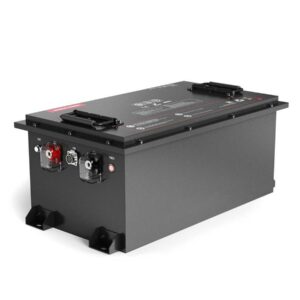
Why are alkaline batteries better?
Alkaline batteries outperform standard zinc-carbon cells due to their higher energy density (2,700 mAh vs. 1,000 mAh in AA sizes) and longer shelf life (5–10 years). Their zinc-manganese dioxide chemistry maintains 1.5V output for 80% of discharge, making them ideal for medium-drain devices like remotes, flashlights, and wireless mice. Unlike NiMH rechargeables, they’re maintenance-free but non-rechargeable.
How to Safely Dispose of and Recycle Car Batteries
How does alkaline chemistry improve energy density?
Alkaline batteries use potassium hydroxide electrolyte instead of acidic ammonium chloride, enabling thicker zinc anodes and manganese cathodes. This boosts capacity by 300% versus zinc-carbon equivalents. Pro Tip: Store alkalines at 15–25°C—heat accelerates self-discharge by 2% monthly.

Alkaline cells achieve 2,700–3,500 mAh in AA formats through layered electrode design. The alkaline electrolyte reduces internal resistance, allowing 500–800 mA continuous discharge—double zinc-carbon’s limits. For example, a TV remote lasts 12 months on alkalines versus 3 months with zinc-carbon. But what if you need bursts? Alkalines handle 2A pulses, unlike zinc-carbon’s 1A ceiling. However, deep discharges below 0.8V risk leakage from gas buildup. Transitioning to cost factors, alkalines provide better $/mAh ratios despite higher upfront costs.
| Feature | Alkaline | Zinc-Carbon |
|---|---|---|
| AA Capacity | 2,700 mAh | 800 mAh |
| 10-Year Retention | 80% | 50% |
| Max Current | 2A | 1A |
Why do alkalines have superior shelf life?
Sealed steel casings and low self-discharge (2% annually) let alkalines retain charge for a decade. Zinc-carbon cells lose 4–6% monthly due to acidic electrolyte corrosion. Pro Tip: Mark battery dates—replace after 7 years even if unused.
Advanced manufacturing seals alkalines with nylon gaskets and epoxy, reducing oxygen penetration. At 20°C, alkalines self-discharge 0.17% monthly versus 0.5% for zinc-carbon. Practically speaking, a pack stored in a cool garage will still power smoke detectors after 8 years. But why does temperature matter? Heat above 30°C accelerates manganese dioxide breakdown, doubling discharge rates. Real-world example: Camera flashes using alkalines maintain recycle times under 4 seconds for 500 shots, while zinc-carbon versions slow to 8+ seconds after 200 shots.
| Condition | Alkaline | Zinc-Carbon |
|---|---|---|
| 0°C Performance | 70% capacity | 40% capacity |
| 30°C Annual Loss | 4% | 15% |
Are alkaline batteries cost-effective long-term?
Despite 3× higher upfront cost, alkalines deliver 5× more cycles in devices like wall clocks. A $1 alkaline AA provides 2,700 mAh versus $0.50 zinc-carbon’s 800 mAh—$0.37 vs $0.63 per 1,000 mAh. Pro Tip: Buy bulk packs—50-unit deals cut per-battery costs by 40%.
Alkalines excel in medium-drain devices used weekly. For example, a wireless mouse consuming 15mA daily gets 180 days from an alkaline versus 55 days from zinc-carbon. But what about infrequent use? Their low self-discharge makes alkalines cheaper than lithium primaries for emergency lights. Transitioning to environmental impact, alkalines have lower mercury content (0.025%) than old zinc-carbon (1%), but recycling remains challenging.
Battery Expert Insight
FAQs
Can you mix alkaline and lithium batteries?
No—voltage curves differ. Mixing causes lithium cells to overwork, risking thermal events. Use identical chemistries per device.
Do alkaline batteries work below freezing?
Yes, but capacity drops 30% at -18°C. For Arctic conditions, lithium primaries retain 90% capacity down to -40°C.
Are expired alkaline batteries dangerous?
Not immediately, but swollen cells should be disposed of via recycling programs. Leaked potassium hydroxide can corrode electronics.
